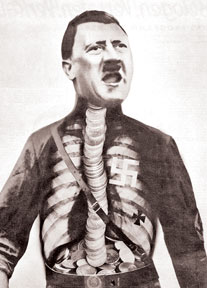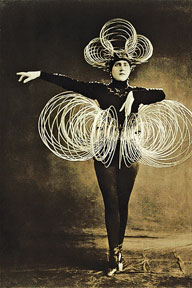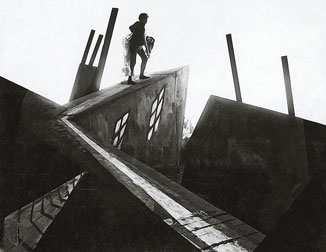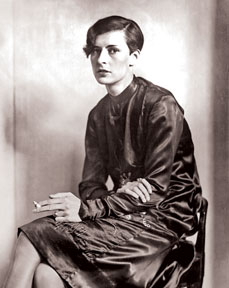|
 Living the mad square: Living the mad square:
German modernism visits Australia
By Dr. Bindy Kampmark
The Mad Square – where there is an eclectic gathering: the dull,
monochrome establishment marked by men in silver beards, dressed in
black, all approaching the Art Academy; and the challenging rearguard of
artistic freedom – Germany’s modernist artists, with their revolutionary
paintings. This is art as arsenal, as a weapons inventory.
They are fighting the conservatives, the killjoys, the grotesque
humourless wowsers who shall determine what we see and who sees it. And
that is the message of Felix Nussbaum’s Der tolle Platz (1931) and the
paintings assembled in the collection entitled ‘The mad square:
modernity in German art, 1910-1937.’ Few art exhibitions visiting
Melbourne this year will come close to this one.
The period was one of the richest in terms of modern creative
impulses – cataclysmic wars, the onset of modernism, brilliant forms of
living and entertainment, journeys into the inner life, and then,
movements to snuff that life out. It was terrifying, and it was
brilliant. It was nonsensical (literally Dada); it featured
Constructivism, the New Objectivity, Bauhaus genius and Expressionism.
The period following World War I was marked by a communist surge, and a
certain foreboding – would Bolshevism claim Germany as it had Russia, or
would the ultra-nationalists prevail? Battles on the streets were waged
between the forces of the Right and the Left.
Today’s political messages are obtuse, but Max Pechstein’s cover for
An die Laterne (1919) of the German Socialist Party (SPD) is
unmistakable. Opponents can only be dealt with in one way: stringing
them up to the lamp.
Beauty
  If life at times seems ugly in these depictions, it is. Beauty, after
all, is a paused ugliness. There is license, vice and death. There are
sex crimes, the violence of the pleasure-seeking metropolis. George
Grosz’s Suicide (1916) features good deal of death, colour and a bare
breasted woman. As Albert Camus ponders, suicide is really the only
philosophical problem worth contending with. By 1916, Europe was not
merely flirting with suicide but committing it. If life at times seems ugly in these depictions, it is. Beauty, after
all, is a paused ugliness. There is license, vice and death. There are
sex crimes, the violence of the pleasure-seeking metropolis. George
Grosz’s Suicide (1916) features good deal of death, colour and a bare
breasted woman. As Albert Camus ponders, suicide is really the only
philosophical problem worth contending with. By 1916, Europe was not
merely flirting with suicide but committing it.
Ugliness and darkness cavort in an array of fabulous formations and
turns. The results are spectacular, a true revolt, explained Peter Gay
in his fine work Weimar Culture, of the sons against their fathers, the
sons who created Bauhaus art, trashed tonal music with the twelve tone
schema and forged expressionism, against the fathers who brought the
country war and murderous nationalism.
The marginal citizens, such as those acrobats who feature in Max
Beckmann’s rich The trapeze (1923), are the ones who matter. Rather than
taking life, they celebrate it.
Daughters of revolt
The exhibition doesn’t let us forget the daughters of revolt either –
Hannah Höch’s Dada collages of emancipation feature lithe sophistication
– feminine but free. As ever, Höch herself was far from free, a victim
of abuse at the hands of her fellow Dadaist Raoul Hausmann. Freedom can
always be vanquished at a moment’s notice.
Portraits are also elegant whilst being mocking. That edge is evident
in such portrayals as Otto Dix’s portrait of the dancer Tamara
Danischewski (1933).
The composition, with its suggestively impish face, conjures up
shades of Lucas Cranach, but it brims with naughtiness – even Slavic
naughtiness, as opposed to the then favoured form of Teutonic beauty.
Others, such as the portrait of Dr. Paul Ferdinand Schmidt (1921) are
even gangrenous in hue, the skin a glowing sulphuric green.
  Towards the end of the exhibition, there are art works mocking Nazism
and its irrepressible rise (to mock is not necessarily to resist, let
alone understand). John Heartfield’s Adolf the Superman (1932) ridicules
Hitler as a gold swallower who ‘spouts rubbish’. The rubbish, however,
worked its magic in the manner of a sorcerer. The artists were none the
wiser. Towards the end of the exhibition, there are art works mocking Nazism
and its irrepressible rise (to mock is not necessarily to resist, let
alone understand). John Heartfield’s Adolf the Superman (1932) ridicules
Hitler as a gold swallower who ‘spouts rubbish’. The rubbish, however,
worked its magic in the manner of a sorcerer. The artists were none the
wiser.
Nazis
There is an advertisement reminding visitors that the Nazis gathered
together, in the Entartete Kunst exhibition in Munich launched in July
1937, one of the finest collections of modernist art the world had seen.
This was not meant as a positive achievement– these were the
‘decadents’, the reprobates of the art world, and they intended it to be
so, a series of pieces depicting an illness that needed to be expunged.
In the strong words of Adolf Ziegler, President of the Reich Culture
Chamber, ‘What you are seeing here are the crippled products of madness,
impertinence, and lack of talent.’
In the end, a provocation. Is Nazism merely the perfection of a
particular type of fetish, a perversion that allows the sexual
proclivities of a paunchy, crater faced Storm trooper such as Ernst Röhm
roam freely while proclaiming ‘family values’? There, God is banished in
favour of providence.
The religious symbols are those of the kitchen, blood and soil, and
the war drums are the musical instruments that guide the nation’s
harmony to national sacrifice. Death is the ultimate deliverance, and
the cult of death finds itself in the Fuhrer’s command to immolate an
entire nation. That is what fathers are ultimately good for – visiting a
reactionary past upon their children.
Binoy Kampmark was a Commonwealth Scholar at Selwyn College,
Cambridge. He lectures at RMIT University, Melbourne.
Email: [email protected]
|

